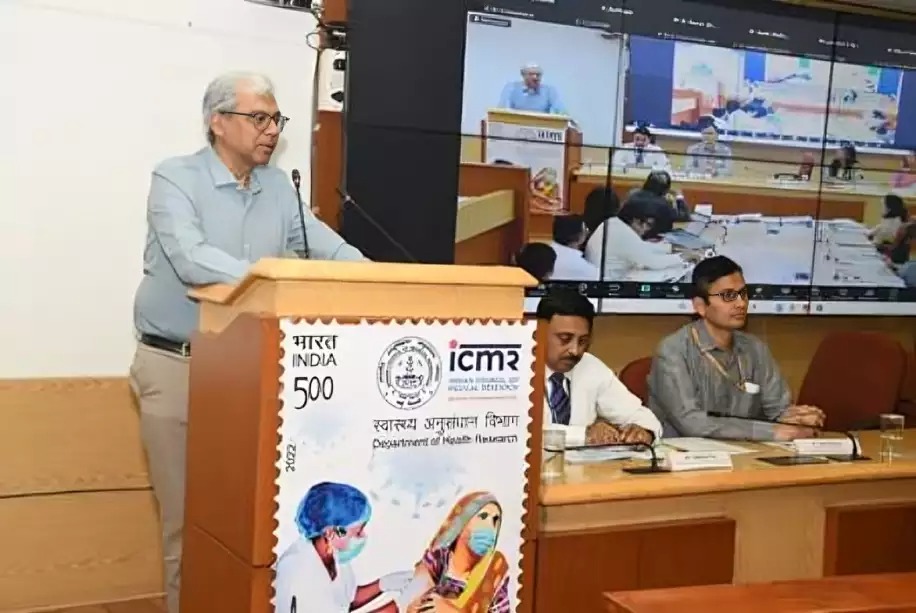Cervical Cancer Prevention: My New-Year Resolution
Dr. Vasundara Cheepurupalli Senior Consultant Gynaecologist, Robotic and Laparoscopic Surgeon, Cosmetic Gynaecologist and Obstetrician KIMS Cuddles, Sec-bad Cervical cancer is a public health problem word-wide, especially in under-developed and developing countries. It is a preventable cancer but is not

Dr. Vasundara Cheepurupalli
Senior Consultant Gynaecologist, Robotic and Laparoscopic Surgeon,
Cosmetic Gynaecologist and Obstetrician
KIMS Cuddles, Sec-bad
Cervical cancer is a public health problem word-wide, especially in under-developed and developing countries. It is a preventable cancer but is not yet prevented. Keeping this in mind, January is declared as “Cervical Cancer Awareness” month. The main objective of this declaration is to create public awareness about this illness, its prevention by vaccination and screening for early diagnosis and management.
- What is Cervical Cancer?
Cervix is the first part of uterus that projects into the birth canal. It is also called as ‘Neck of the womb’ in colloquial language. Caner developing at cervix is termed ‘Cervical Cancer.’
- What is the incidence of cervical cancer in India?
In India, cervical cancer is the second most common cancer in women after breast cancer. Every year about 97,000 women are being diagnosed with this cancer. Among these, around 60,000 women lose their life within a year due to advanced disease. However, more patients of cervical cancer die – one every 2 minutes – in the world, than from any other cancer.
- What causes cervical Cancer?
It is now conclusively proven that persistent ‘Human papilloma Virus’ infection in lower genital tract is the cause for cervical cancer. This virus enters into human body following sexual contact. About 80% to 90% of women clear this infection by their 30th birthday. Body’s immunity plays a very important role in clearing this infection. Those who cannot clear this infection are at risk of developing cancer.
There are more than 100 types of HPV viruses. Clinically, HPV type 16 and 18 are responsible for almost 80% of cervical cancers.
- What are the factors that increase the risk?
Childhood marriages ( <18 years of age) and early sexual activity, multiple pregnancies, multiple sexual partners for both men and women, smoking, alcohol abuse, immune-compromised conditions like HIV infection, blood cancers and organ transplantation.
- What are the symptoms?
Vaginal bleeding following sex, bleeding between regular menstrual cycles, offensive blood stained discharge or persistent vaginal discharge, bladder and bowel problems, low back and pelvic pain.
- How can a women protect herself and her daughters against this cancer?
It is very easy to get protection against cervical cancer.
- Primary Prevention: Vaccine against HPV virus is available for the last 14 years. It is recommended for all girls from the age of 10 years. This offers protection against specific HPV types that cause cervical cancer. Two doses an interval of 6 months is recommended between 10 and 15 years of age. Three doses are recommended after the age of 15. Vaccine is effective if given before the start of sexual activity.
The vaccine also protects the woman against vaginal, vulval, anal and oropharyngeal cancer, all of which are also caused by the human papilloma virus.
In several countries, boys of the same age group are also vaccinated against HPV.
Several countries, as well as some states in India have included the vaccine under the universal vaccination program for all children.
- Secondary Prevention: This is done by screening. Screening is a simple test in asymptomatic, normal, healthy women to find out whether they are at risk of getting cervical cancer in future.
Examining the cervix with naked eye, acetic acid test, Pap smear and HPV test are some examples.
Among these, HPV screening test is highly sensitive. Without having to see a doctor also, the woman can collect vaginal discharge using a self-sampler and submit it for HPV testing. This is perhaps the best way to protect oneself, especially during Covid times!
These tests are recommended for all sexually active women from 30 to 65 years of age at an interval of 3 to 5 years. If a women is tested positive, she should undergo a confirmatory test, called colposcopy, by a well-trained gynaecologist.
- What should be your new-year resolution?
- If you are 30 and above, go for cervical screening.
- If you have a daughter who is 10 or above, get her vaccinated against HPV.
iii. Spread awareness about vaccination and screening to your family, friends and neighbors.
Let us all unite to eliminate and see a world free of cervical cancer






